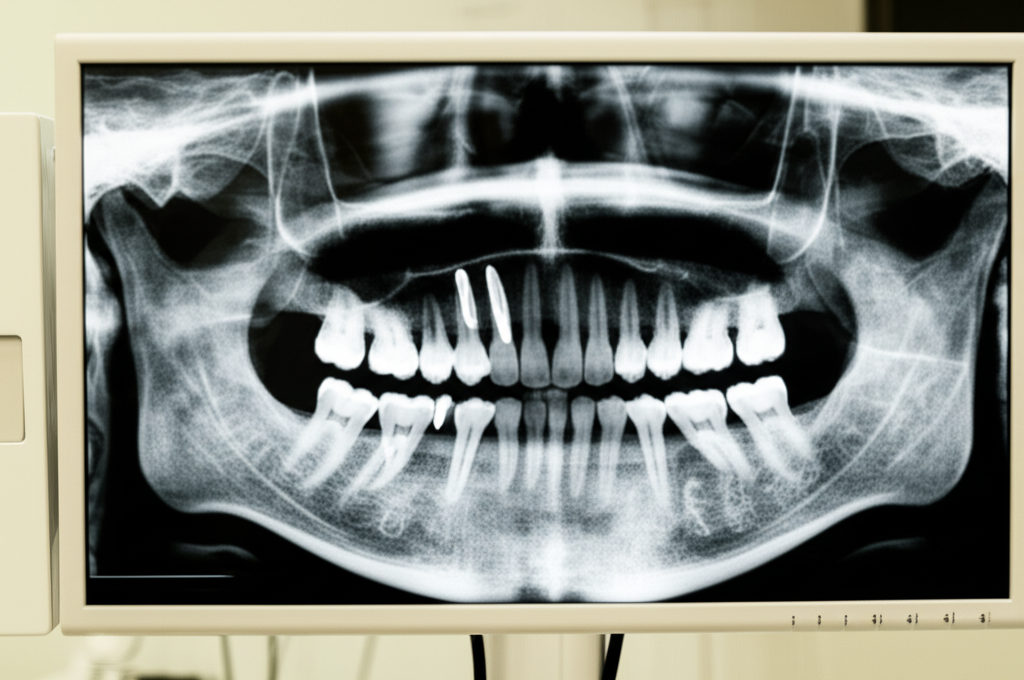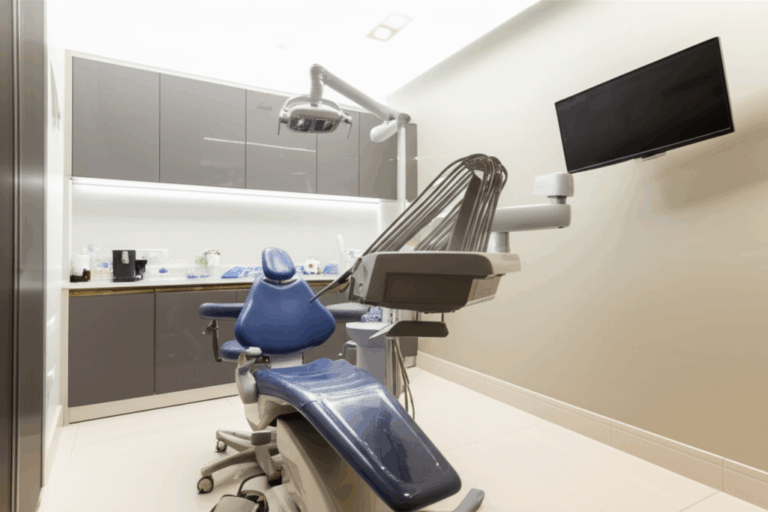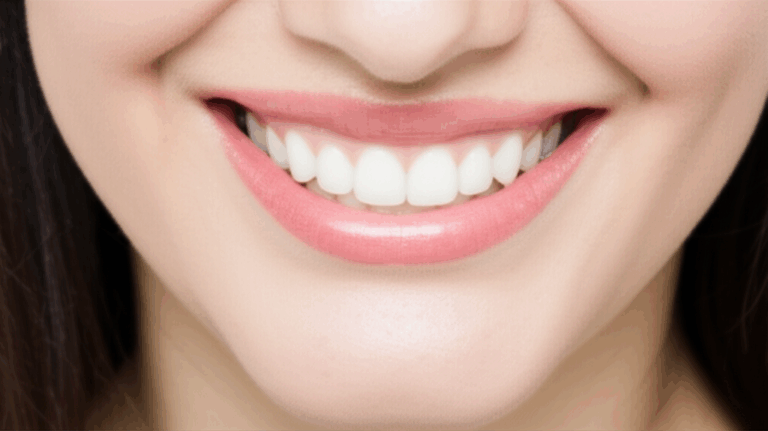
Do Dental Implants Affect CT Scans? What Every Patient Needs To Know
Have you ever wondered, “Will my dental implants mess up my CT scan?” Or maybe your doctor pointed out “artifacts” on an X-ray report, and now you’re worried those fancy teeth might make things harder. You’re not alone—lots of people have these questions, and if you feel a bit nervous, that’s normal. You just want good info about your health.
Let’s answer the big question right away: Yes, dental implants can affect CT scans by making some cloudy or streaky spots called artifacts, but for most people, doctors can deal with these, and CT scans are still safe and useful. What matters is understanding why this happens, what it means for your results, and how you and your dental team can handle it.
Think of your dental implant like a sunbeam shining through a window. Sometimes the light makes strange patterns or shadows, making it hard to see what’s inside the room. That’s what CT scans do if they hit metal—they shine light inside, but some shadows get in the way.
In This Article
- What Are Dental Implants and CT Scans? The Basics
- Why Do Dental Implants Cause CT Artifacts?
- How Do Dental Implants Change Different Types of Scans?
- Modern Ways To Fix or Minimize Artifacts
- Are CT Scans Still Accurate and Safe for People with Implants?
- Frequently Asked Questions
- Your Takeaway: Clear Steps for a Confident, Healthy Future
What Are Dental Implants and CT Scans? The Basics
Let’s keep it simple. There are lots of big words at the dentist or hospital, but here’s what you really need to know.
Dental Implants:
A dental implant is just a strong fake root—most are made from titanium or zirconia—that a dentist puts in your jawbone. On top of this, they put crowns or bridges to fix your smile after losing a tooth. They are built to be tough and almost invisible in daily life.
CT Scan (Computed Tomography):
A CT scan is a special X-ray that takes many pictures of the inside of your body, mouth, or head from different sides. Then, the computer combines the pictures to make a 3D image, so doctors can look at bones, teeth, and other parts inside.
Sometimes you might hear CBCT (Cone Beam CT) at the dentist. It’s a type of scan that focuses mainly on your mouth and jaw, showing lots of detail.
If you want to learn more about how a dental implant is made, or what dental implant labs do, there are places that explain all the science and steps.
Why Do Dental Implants Cause CT Artifacts? The Simple Science
This is the main thing: dental implants can cause “artifacts” on CT scan pictures. But what does that really mean, and why does it happen?
Understanding Artifacts: Like Sunlight Coming Through Blinds
Think about sunlight shining through your window blinds. The light gets stripes and shadows, so it’s hard to see what’s in the room. That’s basically what happens when a CT scan goes through a metal implant.
The Science Behind It
Here’s what’s going on:
- Density and Material:
Dental implants are made from heavy metals (titanium) or hard ceramics (zirconia). When CT scan X-rays hit these, some rays get blocked, and others go through, making odd patterns.
- Beam Hardening:
The implant blocks weaker X-rays and lets the strong ones through, which can make dark lines or bands.
- Photon Starvation:
Sometimes, the implant soaks up almost all the rays. This leaves blank or really dark areas in the picture.
- Scatter:
X-rays bounce off the metal in strange ways, making things look blurry or leaving bright streaks.
These changes—streaks, bands, bright spots, blurry parts—are called “artifacts.” They can make it hard for the doctor to see what’s happening right near your implant.
Not All Implants Are the Same
What the implant is made of matters. Titanium (the most common) is great for your bone but makes the most artifacts. Zirconia implants (not as common) can make about 20-40% fewer artifacts. Still, both kinds show up in your scan.
How Do Dental Implants Change Different Types of Scans?
Now you know “why,” let’s see “how much” they matter in real life. Not every CT scan is changed the same way, and it depends on what your doctor or dentist is looking for.
A. CBCT Dental Scans (For Teeth and Jaw)
If you’re getting a scan for your mouth or jaw, your dentist probably uses cone beam CT (CBCT). This scan helps them:
- Plan where to put a new implant
- Check how the area is healing
- Look closely at your jawbone or the teeth nearby
Impact:
Artifacts from implants can make it hard to see small things right next to them, like how well bone grew around the implant (osseointegration) or if there’s an infection (peri-implantitis). It’s a bit like trying to see footprints in a picture with too much sun glare—details near the metal can be fuzzy or missing.
Who’s Most Affected?
- People with lots of implants together (like full mouth jobs)
- People being checked for problems in bone or nerves right by the implant
B. Medical CT Scans (For the Head, Neck, Brain, or Sinuses)
If you get a normal medical CT scan of the head or neck (not just for teeth), like if your doctor is looking for infection or something else:
Impact:
Here, implant artifacts might show up in places outside your jaw, causing streaks or dark areas in the cheeks, sinuses, or even a bit into the brain. This might hide small things—like a tiny bump or infection.
What About The Rest Of My Body?
Usually, dental implants don’t mess with scans below the neck. But if you get a head or face scan, always let your doctor know about your implants!
C. Radiologists: The “Detectives” of Dental Imaging
The good part: the people who read your scans (radiologists) are trained to spot these artifacts and look at the scan in other ways. They’re like good photographers—they know a shadow from a real problem.
But in hard cases—lots of implants or rare materials, or tricky questions—it can be tough to tell what’s artifact and what’s not. Once in a while (less than 5% of the time), a CT scan may not have enough detail close to the implant to give all the answers.
Hard Numbers: How Big Is The Problem?
- All metal dental work (implants, crowns, fillings) makes some kind of artifact.
- There can be up to 80% less visibility of small things right near an implant.
- Radiologists’ confidence can drop 30–50% in artifact-heavy scans.
- But: Most scans still give important information.
Modern Ways To Fix or Minimize Artifacts
Here’s some good news: technology is getting better all the time. Newer machines and computer tools can make artifacts less of a problem—or help doctors work around them.
What Can You (The Patient) Do?
- Take Out What You Can:
If you have dentures, partial bridges, or metal pieces that you can remove, take them out before the scan.
- Tell Your Tech or Doctor:
Let them know about any implants, crowns, bridges, or even wires in your mouth. This helps them pick the right settings for the scan.
What Can Your Dental Team or Radiologist Do?
1. Special Types of Scans
- CBCT Scans:
For dental work, cone beam CT is best. It scans a smaller area, which means fewer big artifacts—like using a flashlight instead of a floodlight.
2. Smart Computer Tools
- Metal Artifact Reduction (MAR):
These are computer programs that notice the gaps or streaks and try to “fill in” or correct the picture, cutting down shadows or streaks by 20–60%. They can’t remove everything, but make it easier to see.
- Iterative Reconstruction:
This is a way to fix up the scan image, sort of like sharpening a blurry photo. It can help, especially around metal.
- Optimized Scan Settings:
Changing the scanner’s settings—like the strength of X-rays, time, or angle—can help shrink artifacts.
- Small Field of View:
Focusing the scan just on the mouth or jaw helps keep shadows out of other parts.
3. Implant Material Makes a Difference
- Titanium:
Very strong, used the most, but makes the most artifact.
- Zirconia (White Ceramic):
Newer, shows up less in scans, and makes 20–40% fewer artifacts.
Curious about different materials and how dental labs are changing the game? Read about zirconia labs for more.
Are CT Scans Still Accurate and Safe for People with Implants?
You probably want to know if your implant might mess up test results or could get hurt during a scan.
Safety: No Worries
- Your Implant Is Safe:
CT scans use X-rays, not magnets. The implant can’t move, heat up, or get ruined.
- You Won’t Be Hurt:
There’s no danger of your implant “sparking” or anything like that. If someone says so, they’re mixing up CT with MRI (a very different scan).
Accuracy: Usually Good, Sometimes Tricky
- Most of the Time:
Radiologists can get the info they need, even with artifacts. They use plenty of strategies to see close to the metal if needed.
- Rarely (Many Implants or Heavy Metals):
Artifacts may block tiny details, like a tiny cavity or a very thin part of bone. If a doctor needs a clear view right next to the implant, they might:
- Change the scan
- Use smart artifact-removal programs
- Try a different test (like MRI, for soft tissues)
- Bottom Line:
Almost all scans are “clear enough” to help you, even with artifacts. The big problems are rare and usually only in special, tricky cases.
Why You Should Tell About Your Implants
Always let your doctor or dentist know about any metal or ceramic dental work before the scan. This helps them plan and read your scan the right way.
Frequently Asked Questions About Dental Implants and CT Scans
1. Will a CT scan harm or loosen my dental implant?
No, CT scans can’t harm, move, or heat up your implant.
2. Can dental implants hide a tumor or infection in a CT scan?
Artifacts from the implant could block out very tiny things—usually within 1–2 millimeters of the implant. Expert radiologists try to see around these spots, but sometimes a different scan is needed for those hard-to-see areas.
3. Should I tell the scan team about my implants?
Yes! They can adjust the scan, use special software, or leave a note for the person reviewing your scan.
4. Do all dental implants cause the same amount of artifacts?
No. Titanium makes more artifacts than zirconia. Having many implants close together (like full-arch bridges) also causes more artifacts than a single tooth implant.
5. What’s the biggest difference between a dental CBCT scan and a regular CT scan when you have implants?
CBCT is only for teeth and jaws, so there’s less spillover artifact. A regular medical CT might show artifacts in more places, depending on what’s being scanned.
6. Should I remove my denture, bridge, or retainer for a scan?
If you can, yes. Take out any removable metal dental work before the scan. If you’re not sure, just ask them.
If you want to explore more about dental technology and labs, check out a digital dental lab for more info.
Who Needs To Know? (Good Candidates for Careful Planning)
Most of the time, dental implants are simple to deal with for dentists and doctors. But in some cases, being extra careful is a good idea:
People Who Might Need Special Imaging Plans:
- Full-arch restorations: If you have lots of implants connected together (like “All-on-4”), there will be more artifact in head/neck scans.
- People with lots of implants and other metal dental work: The more metal in your mouth, the more artifact.
- Anyone getting checked for infection or bone loss around their implant: You might need a focused CBCT scan and some of the smart tools above.
Less of a Problem For:
- People with only one or two implants
- People getting scans far from their teeth or jaw (like a chest scan)
- Non-metal implants (all-zirconia or all-ceramic)
Not sure if your case is tricky? Ask your dentist if you might need special imaging or artifact fixes. They might work with a dedicated lab to get the best results.
Your Takeaway: Clear Steps for a Confident, Healthy Future
Ready for a quick summary? Here’s your simple action plan:
Quick Recap:
- Dental implants are safe during CT scans—they won’t be harmed.
- All metal or heavy implants make some image “cloudiness” (artifacts) in a scan.
- Artifacts can hide what’s right next to or behind an implant, especially small details.
- Tech and skilled workers can often work around these issues using special scan tricks and computer programs.
- Always let your doctor, dentist, or X-ray tech know about all implants, crowns, or other metal pieces in your mouth before you get scanned.
- If you have lots of implants or a tricky situation, you might need a CBCT scan, artifact software, or other solutions.
Easy Next Steps:
- Don’t skip scans out of fear. Most scans work well and are important for your health.
- Talk with your care team before your scan—let them know about your dental work and ask questions.
- Bring a list of your implants, crowns, bridges, or retainers to your scan visit.
- Ask if someone will review your scan for artifacts or if advanced options are available, if you think you’ll need it.
- Look for info from trusted dental providers and labs. More knowledge helps you make better choices.
Want to learn more about dental tech, lab work, or new ways to fix teeth? There are lots of sites about dental problems, up-to-date dental implant options, and what labs do to make better smiles.
Final Thoughts
Getting dental work and medical scans can feel like a lot, especially when you read about new terms and possible problems. But here’s the truth: most people with dental implants can get the scans they need, with no hassle or danger. The key is good communication and up-to-date technology.
Remember:
You don’t need to solve the science, just know the basics, ask your care team good questions, and trust them to use the best tools for your health. With a good plan, your healthy smile and peace of mind can go together.
If you have questions about your dental work or what will show up on a scan, just ask your dentist or doctor. Knowing more is always the safe bet for your health.








